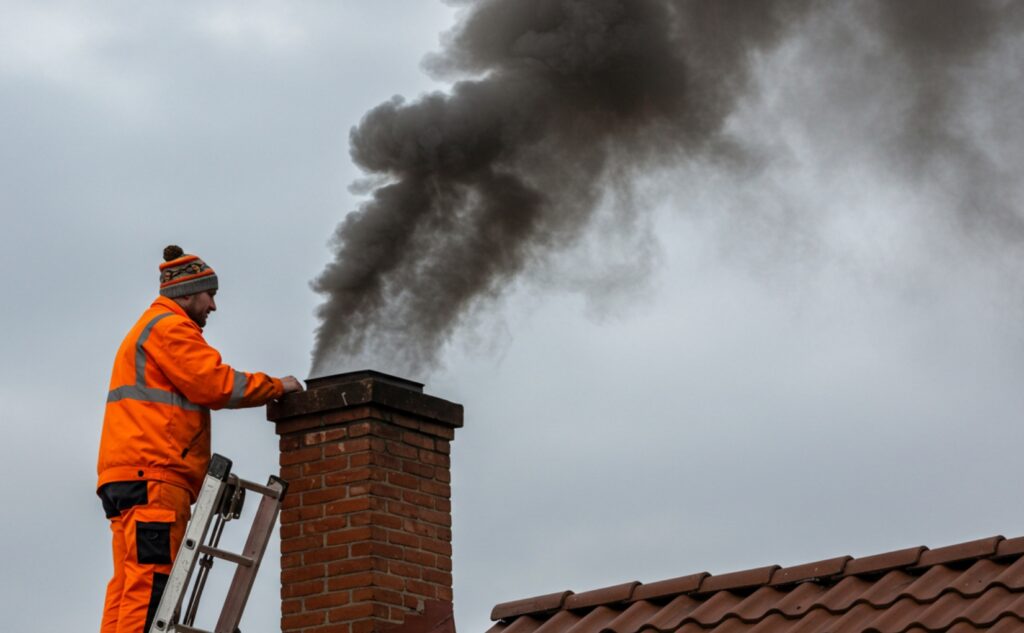Professional Chimney Sweep Services in New Orleans

Chimneys in New Orleans face unique challenges. A Noble Sweep understands the city’s climate, high humidity, and frequent storms can accelerate wear and tear on chimneys, especially in the older homes that define many neighborhoods. Issues like creosote buildup, blockages, and structural damage can compromise your chimney’s safety and performance without regular care.
Professional chimney sweep services are the key to preventing these problems. They ensure your fireplace operates at its best, reduce fire hazards, and improve air quality for a healthier living environment. Below, we explore the most common chimney issues in New Orleans and why investing in routine services from A Noble Sweep is a smart choice for homeowners.
Common Chimney Issues in New Orleans
Homeowners in New Orleans should consider annual maintenance for their chimneys. From creosote buildup to structural wear caused by the city’s humid climate and frequent storms, maintenance is critical for preventing long-term damage and safety risks.
How Creosote Buildup Poses a Fire Risk
Every time you burn wood in your fireplace, creosote—a sticky, highly flammable substance—forms along the walls of your chimney. Over time, this residue can harden into a thick layer, increasing the risk of chimney fires. Regular professional sweeping ensures that creosote is safely removed before it becomes a hazard.
Blockages That Affect Chimney Ventilation
New Orleans chimneys are often prone to blockages caused by bird nests, leaves, and other debris. These obstructions can restrict airflow, leading to poor ventilation and allowing harmful gases, like carbon monoxide, to back up into your home. A blocked chimney isn’t just inefficient—it’s dangerous. Professional chimney sweeps can identify and clear these blockages to keep your home safe.
Structural Damage in Older New Orleans Homes
Older chimneys in New Orleans homes are more susceptible to wear and tear. Cracks in the masonry, loose bricks, and damaged flue liners can compromise the chimney’s integrity. Left unchecked, these issues can lead to costly repairs or even render the fireplace unsafe. A professional chimney sweep will clean and inspect your chimney for signs of damage, helping you address problems early.
The Value of Professional Chimney Sweep Services
Regular chimney maintenance does more than keep your fireplace clean. Professional chimney sweep services offer safety, efficiency, and peace of mind, protecting your home from preventable risks.
Protect Your Home with Fire Safety
Creosote buildup is one of the leading causes of chimney fires. Hiring certified professionals ensures this dangerous residue is safely removed, reducing the fire risk and keeping your home secure.
Improve Indoor Air Quality
A blocked or dirty chimney can trap harmful gases like carbon monoxide inside your home. Professional sweeps remove obstructions and improve ventilation, helping to maintain healthier indoor air for your family.
Maximize Heating Efficiency and Save Energy
When airflow is restricted, your fireplace burns less effectively, requiring more wood to produce the same amount of heat. A clean chimney enhances airflow, allowing your fireplace to operate more efficiently while reducing fuel costs.
Spot Issues Early with Preventative Maintenance
Professional chimney sweeps do more than clean—inspect your chimney for hidden problems like cracks, leaks, or structural weaknesses. Addressing these issues early can save you from expensive repairs and extend the life of your chimney.

Why New Orleans Homeowners Trust A Noble Sweep
For over 30 years, A Noble Sweep has been the trusted provider of chimney maintenance in New Orleans and the Gulf Coast. Our team of certified professionals combines decades of experience with advanced tools and techniques to deliver top-quality service.
Whether you have an older chimney requiring extra care or need routine maintenance, we tailor our services to meet the unique needs of New Orleans homeowners. With a commitment to safety and efficiency, we help ensure your fireplace operates at its best year-round.
Schedule Your Chimney Sweep Today
Don’t let creosote buildup, blockages, or structural issues compromise your home’s safety or comfort. A Noble Sweep offers expert chimney sweeping services to protect your family and keep your fireplace performing efficiently.
Contact us today to schedule your professional chimney sweep in New Orleans. Experience the trusted care and expertise that homeowners have relied on for decades.
Your Chimney Sweep Questions Answered
Q: What is the difference between a chimney sweep and a chimney inspection?
A: A chimney sweep focuses on cleaning your chimney to remove creosote, soot, and blockages, while a chimney inspection evaluates your chimney’s structural integrity and safety. Both services are essential for maintaining a safe and efficient fireplace.
Q: Are chimney sweeps necessary if I rarely use my fireplace?
A: Yes, even if you use your fireplace infrequently, debris, creosote, or animal nests can accumulate and create hazards. Regular maintenance ensures your chimney is safe to use when you need it.
Q: How can professional chimney sweep services help with older chimneys in New Orleans?
A: Older chimneys require extra care due to structural vulnerabilities or outdated designs. Professional chimney sweeps can identify damage, recommend repairs, and maintain the functionality of older systems while preserving their historical character.
Q: What tools do professional chimney sweeps use?
A: Certified chimney sweeps use specialized tools such as rotary brushes, HEPA vacuums, and video inspection cameras to thoroughly clean and assess chimneys. These tools ensure a more effective and safer cleaning process than DIY methods.
Q: Does chimney sweeping improve indoor air quality?
A: Absolutely. By removing creosote, soot, and blockages, professional chimney sweeping prevents harmful fumes like carbon monoxide from lingering in your home. This improves ventilation and ensures healthier indoor air for your family.
